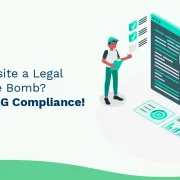
Why Do You Need End-to-End Testing?
In end-to-end testing, the entire software product from beginning to end is tested to make sure that the application (flow) behaves as required. End-to-end testing verifies if all components of a system are able to perform optimally under real-world scenarios.
Mainly, end-to-end (E2E) testing is used to test the software system from the end user’s perspective by simulating the real user scenario. It is also used to validate the system and its components for integration and data integrity.
Software systems are increasingly complex and interconnected with a number of subsystems, so much so that in case any one of the subsystems fails, the entire system could crash. Such a huge risk can be avoided by conducting end-to-end testing.
Table of Contents:
Technological advancements enable modern software systems to allow interaction among subsystems. Regardless of the subsystem being the same as or different from the main system and regardless of the subsystem being within or outside the organization, subsystem failures can adversely affect the entire system. Such system risks can be avoided by: verifying the system flow, expanding the test coverage areas and detecting bugs involving the subsystem.
Also Read: 7 Methods of QA Testing Every IT Company Must Know
Thus, end-to-end testing has been widely adopted because of:
- Expanded test coverage
- Guaranteed correctness of the application
- Reduced time to market
- Reduced cost
- Detection of bugs
An end-to-end testing lifecycle comprises four components:
- Test planning: This component decides the key tasks, associated schedule, and the required resources.
- Test design: This component concerns the test specifications, test case generation, risk analysis, usage analysis, and scheduling tests.
- Test execution: This component is all about executing test cases and documenting testing results.
- Results analysis: This component is about analyzing test results, evaluating, and performing additional testing if necessary.
Methods of End-to-End Testing
1. Horizontal E2E Testing
It is a commonly used, well-known method. Horizontal testing brings in the user’s perspective by confirming if a user can navigate through a system easily; if the system works as required; and if there are any unexpected bugs or exceptions. It occurs horizontally across the context of multiple applications and takes place in a single Enterprise Resource Planning (ERP).
2. Vertical E2E Testing
Vertical end-to-end testing occurs in layers: that is, the tests happen in sequential, hierarchical order and every component of a system is tested from start to finish in order to ensure quality. Vertical end-to-end testing is typically used in a system without UI or the UI has a high technical skill-cap.
Also Read: Backend Testing – The Ultimate Guide You’ll Ever Need
Drawbacks of E2E Testing in Contrast to Today’s Software Testing
In software testing, smaller tests are performed at a faster pace and end-to-end testing is used only for final integration and pre-release evaluation. An example is the Testing Pyramid of software testing that is compared with end-to-end testing.
At the bottom of the testing pyramid, there is unit testing. It addresses smaller pieces of the system or code and is, therefore, faster and more efficient than end-to-end testing. A bug spotted in an end-to-end test could be anywhere in the system and would take longer to fix but one that is found in a unit test would need far less time to fix. Integration in the middle section tests how multiple units operate together with a proper flow of information. It is similar to vertical end-to-end testing as it tests the underlying framework of the user interface. The final/top portion of the Testing Pyramid involves a small amount of end-to-end testing (or UI testing) where the system is tested horizontally as a whole. Therefore, most part of the testing is unit testing followed by integration testing which is further followed by end-to-end testing.
Despite its strengths, end-to-end testing is no longer widely used in software testing. It has been supplanted by other testing methodologies. The latest software development cycles tend to employ some form of Agile Development such as DevOps which is a fast-paced, team effort approach to software development. As it turns out, end-to-end testing is too slow for Agile methods of software development.
At Hurix Digital, we recreate real-world user scenarios, so that the system is validated for data integrity and integration and ensure the end-to-end testing is done with maximum efficiency.
To know more about Backend Testing solutions, Contact us today.

Vice President & SBU Head –
Delivery at Hurix Technology, based in Mumbai. With extensive experience leading delivery and technology teams, he excels at scaling operations, optimizing workflows, and ensuring top-tier service quality. Ravi drives cross-functional collaboration to deliver robust digital learning solutions and client satisfaction




